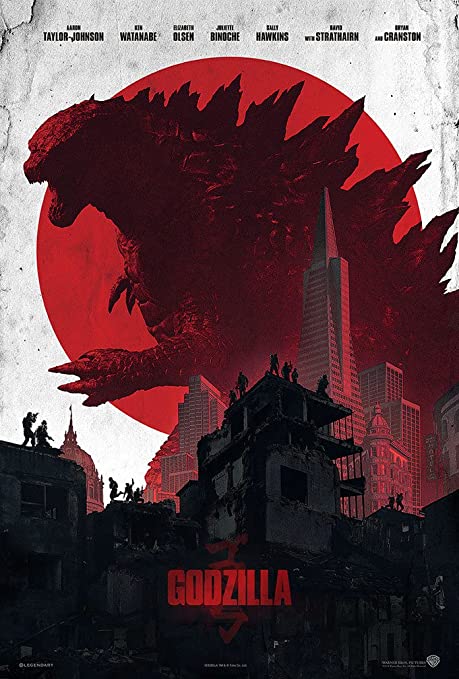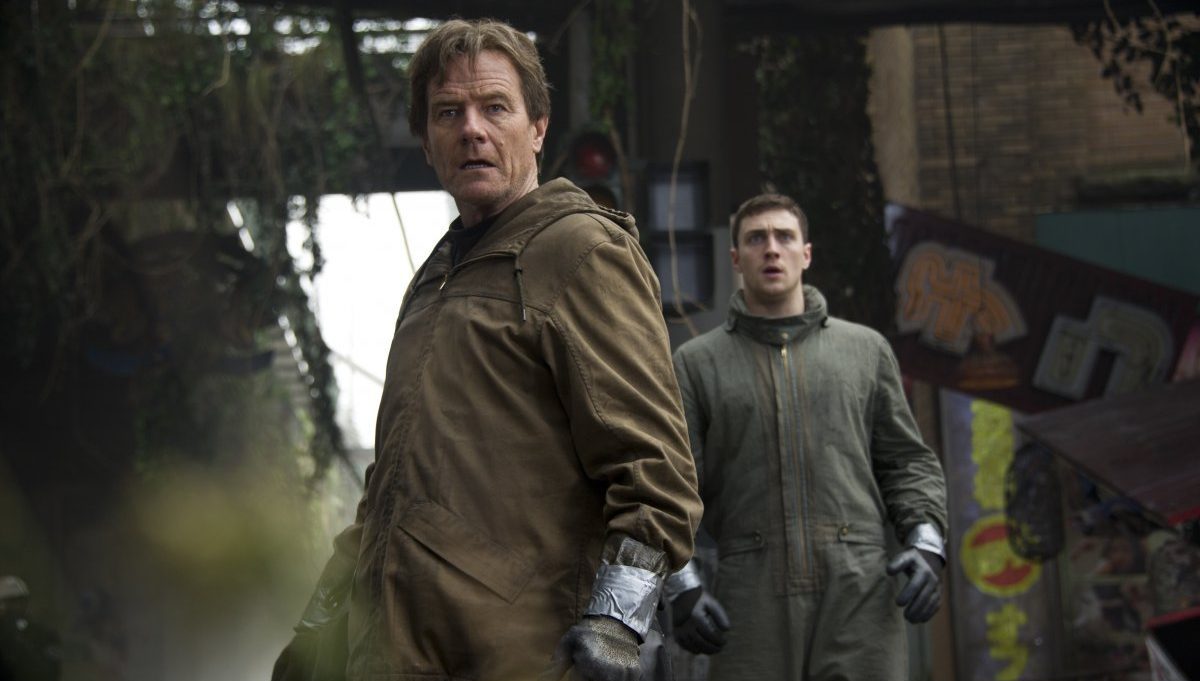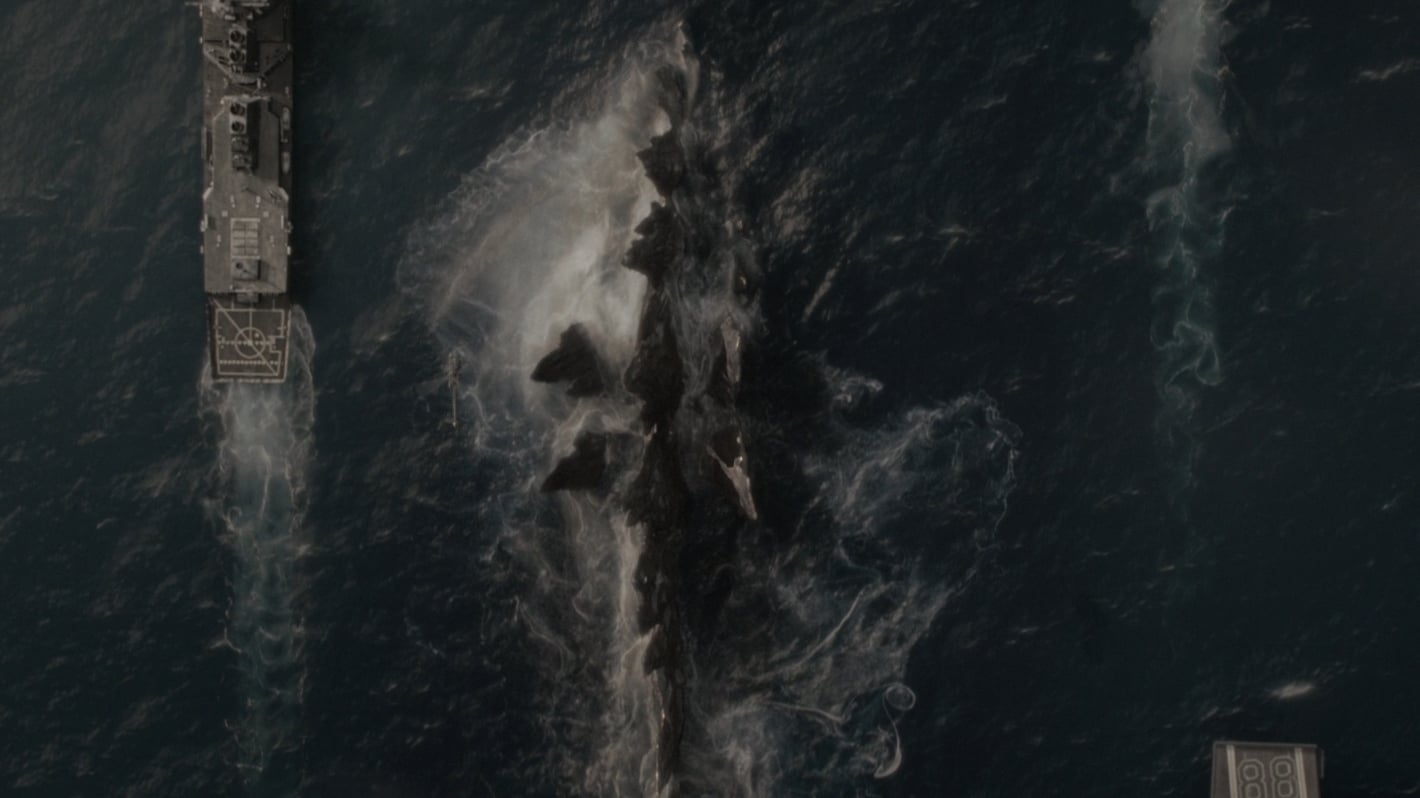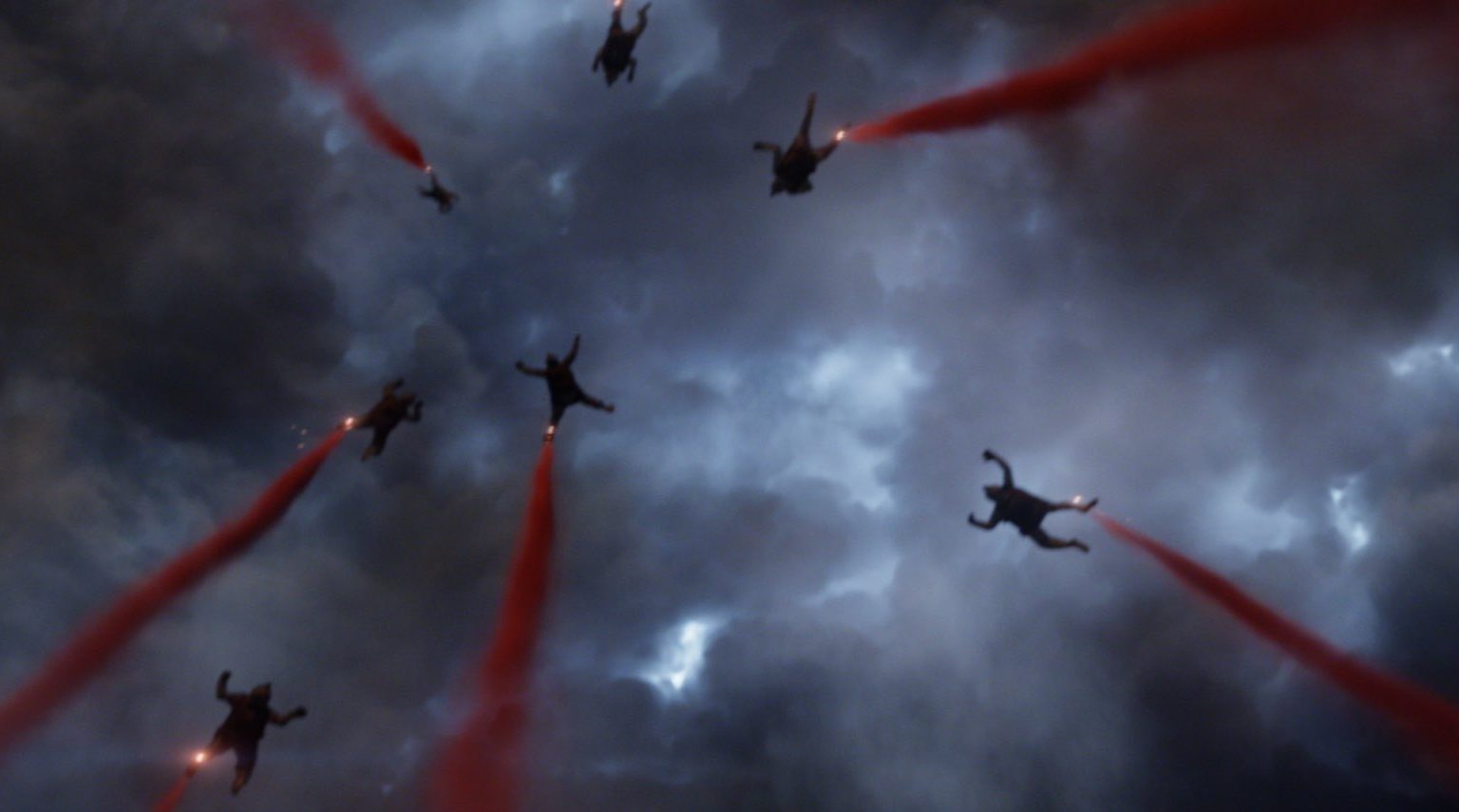

“The arrogance of men is thinking nature is in our control and not the other way around. Let them fight.”
I didn’t intend to approach Gareth Edwards’ Godzilla blindly. I had planned to start all the way back in 1954 with the original Godzilla and then gradually work my way through the various eras, observing how the series evolved across the decades, how suitmation gave way to CGI, and how the series shifted in tone and theme. I had even considered carving out some time for Rolland Emmerich’s critically lambasted Hollywood version and the Netflix-distributed animated films of recent years. My only previous exposure to the franchise was via MST3K, maybe a video game or two, and whatever else was osmotically soaked up through the character’s pop culture ubiquity, so I was really looking forward to the experience.
Thing is, though, I’m participating in this thing called marriage, wherein occasional sacrifices must be made to keep things running smoothly. And since the person to whom I’m married is perfectly willing to watch a modern, English-language version of a beloved old Japanese film, but otherwise couldn’t care less about rummaging through the annals of film history along with me, I gritted my teeth and pressed play. And I must say that I’m quite glad that I did. To nutshell it, Gareth Edwards’ Godzilla is an awesome B movie smoothed over with the gloss made possible by an A movie budget. Not without its flaws, of course, but a cut above the standard modern franchise reboot.
The elements that stand out most prominently are Edwards’ confidence and patience. It’s honestly mind-boggling that this is only his second feature film after a modestly impressive low-budget debut (Monsters). In Godzilla he settles in and takes his time dishing out familiar monster-movie beats, beginning with a double flashback prologue and the introduction of a different monster—the MUTO (Massive Unidentified Terrestrial Organism)—long before Godzilla comes on the radar. The flashback introduces us to Joe Brody (Bryan Cranston), a supervisor at a nuclear power plant in Japan where mysterious seismic activity causes a breach in a reactor that tragically claims the lives of his wife (Juliette Binoche) and several other technicians. Meanwhile, two scientists, Drs. Ishirō Serizawa (Ken Watanabe) and Vivienne Graham (Sally Hawkins), investigate a collapsed uranium mine in the Philippines where they find a large prehistoric skeleton and two spores—one dormant, one apparently hatched—and a trail of destruction leading to the sea.

Jump ahead fifteen years and Joe’s son Ford (Aaron Taylor-Johnson) is a bomb defuser in the Navy. No sooner has he made it home from a tour of duty, tucked his son (Carson Bolde) into bed for the night, and started smooching on his wife Elle (Elizabeth Olsen), then he must fly to Japan because Joe has been detained for trespassing in the quarantine zone near the power plant. Joe doesn’t buy the official reports and, according to Ford, has worked up a bunch of “crackpot, cuckoo theories” about what’s really going on. But once Ford spends the night in his father’s small apartment—newspaper clippings covering every inch of the walls, echolocation textbooks and other esoterica crammed into every nook and cranny—and gives him an opportunity to make his case, Ford agrees to travel with him back to the quarantine zone. There, they discover that radiation levels are nonexistent because a chrysalis has been feeding off one of the functioning reactors for the past fifteen years. From that chrysalis emerges a MUTO—a gargantuan, winged, spidery beast that can send out EMP shockwaves for miles in every direction. The MUTO, which is soon joined by a larger, wingless female, threatens to wipe out humanity… unless Godzilla comes to the rescue. As the military rapidly works out plans to lure the MUTOs and Godzilla into the ocean and drop a nuclear bomb on all three of them, Dr. Serizawa posits that Godzilla is not an evil force but a protective one. “Nature has an order. A power to restore balance. I believe he is that power.” Tidal waves, skydiving, and fire-breathing ensue.

While Godzilla fits the broad definition of the modern CGI blockbuster, Edwards adeptly infuses his project with subtle tweaks that give it a leg up on its contemporaries. His introduction of Godzilla is a prime example of where his approach differs from the standard formula. For starters, as I already mentioned, he fakes us out with the MUTO first. Then, he teases Godzilla’s spiky back appendages sticking up from the water and some brief out-of-frame action. When it is finally time to reveal Godzilla, several puny little soldiers are positioned atop a downtown high-rise as they launch flares straight up into the night sky. We expect these to illuminate the fearsome primordial creature—but at their peak the flairs barely reach the level of his waist. Flares are used in another iconic moment when soldiers parachute into foggy night to perform a HALO jump, blazes of red trailing off behind them as ‘Requiem, for Soprano, Mezzo-Soprano, 2 Mixed Choirs and Orchestra’ imbues the moment with a terrible sense of dread as they descend toward a suicide mission.
There are occasional fumbles. Chief among these is a cookie-cutter human storyline that doesn’t resonate emotionally. Well, it does, but only up until Cranston’s arc comes to an end and the brief moments when Olsen is on screen. Each of them gives their characters more depth than exists on the page, but elsewhere the material is too light for Taylor-Johnson to craft a character worth investing in—which helps to underscore the otherworldliness of Godzilla but might have been hinders emotional investment. The other big foible is that a grim aesthetic hangs over all but a few action sequences. Even as I commended the creative use of color in a previous paragraph, I must criticize the decision to shroud so many of the visuals behind rain, smoke, fog, and dust; but most egregiously, darkness. It was borderline impossible to make out what was happening in too many of these action scenes as they flattened into a murky grey. I suppose this has the benefit of masking any shortcomings in the CGI work. However, it is worth noting that numerous people who saw Godzilla in theaters recalled a brighter look than the home release, and a 4K remaster seems to have corrected some of the issues.

And yet despite utilizing (or maybe not) the unhealthy visual style that hampers so many “gritty” updates on old franchises, Godzilla avoids the pessimistic trend of those films by presenting a story of hope and wonder without irony or shame. In Spielbergian fashion, the first real glimpse of Godzilla comes as a child watches the news while his mother does the dishes. Our hearts skip a beat when the water recedes from the Hawaiian shoreline as Godzilla emerges from the sea. Once the tension boils over and action sequences take precedence, Edwards contextualizes the epic monster showdowns with human perspectives as onlookers gaze in awe from within the beasts’ strike zones. Even more interesting to me—and I anticipate this will come through in some of the older films as well—is how Godzilla is presented as a benevolent savior; a hero who returns only when his people need him. But also one that is also fundamentally incapable of communicating with his subjects, and due to his immense destructive powers, finds himself feared and reviled by the very same people he protects.
I was a little bit apprehensive that watching the modern reboot might turn me off from going back through time and exploring the series as a whole, but it’s done the opposite. Despite the film’s second-rate characterizations and inability to transcend its compilation of tropes, there’s a blockbuster showmanship on display in the prolonged climax that makes you want to let out a whoop of triumph by its end. Bring on some more Godzilla.